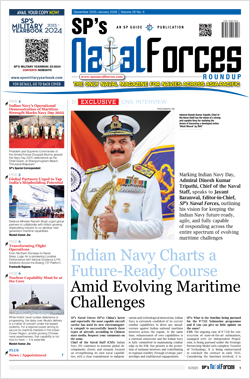INDIAN ARMED FORCES CHIEFS ON OUR RELENTLESS AND FOCUSED PUBLISHING EFFORTS

The insightful articles, inspiring narrations and analytical perspectives presented by the Editorial Team, establish an alluring connect with the reader. My compliments and best wishes to SP Guide Publications.

"Over the past 60 years, the growth of SP Guide Publications has mirrored the rising stature of Indian Navy. Its well-researched and informative magazines on Defence and Aerospace sector have served to shape an educated opinion of our military personnel, policy makers and the public alike. I wish SP's Publication team continued success, fair winds and following seas in all future endeavour!"

Since, its inception in 1964, SP Guide Publications has consistently demonstrated commitment to high-quality journalism in the aerospace and defence sectors, earning a well-deserved reputation as Asia's largest media house in this domain. I wish SP Guide Publications continued success in its pursuit of excellence.
- Global Partners Urged to Tap India's Shipbuilding Potential: Rajnath Singh at Samudra Utkarsh
- All about HAMMER Smart Precision Guided Weapon in India — “BEL-Safran Collaboration”
- India, Germany deepen defence ties as High Defence Committee charts ambitious plan
- G20 Summit: A Sign of Global Fracture
- True strategic autonomy will come only when our code is as indigenous as our hardware: Rajnath Singh
- India–Israel Joint Working Group Meeting on defence cooperation to boost technology sharing and co-development
Second Indigenous Aircraft Carrier
Amid rising regional challenges, India plans to secure its seas with ambitious plans for indigenous Aircraft Carriers
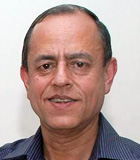 |
The Author is Former Director General of Information Systems and A Special Forces Veteran, Indian Army |
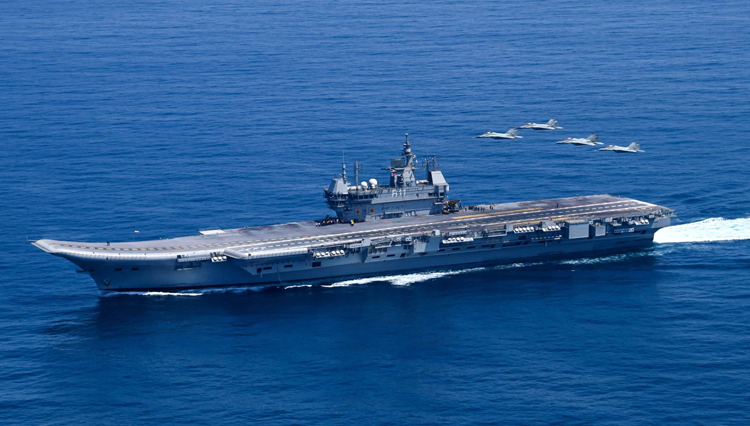
The Defence Procurement Board (DPB) has vetted the proposal forwarded by the Indian Navy (IN) for a second Indigenous Aircraft Carrier (IAC-2) at a cost of around 40,000 crore. Now the DPB is reportedly in the process of placing this before the Defence Acquisition Council (DAC), chaired by the Defence Minister, for approval, along with some other proposals. Media has quoted unnamed government officials saying that with increasing Chinese belligerence in the Indian Ocean Region (IOR), India will have to extend its sea and air power into far-off areas like the Straits of Malacca and the Gulf of Aden. An aircraft carrier is a floating airfield and adds to the surge capability as the fighter jets operating from land will always have their limitations.
About 90 per cent of the hull, 50 per cent of the machinery and 30 per cent of weapons and sensors of India's first Indigenous Aircraft carrier (IAC-1) INS 'Vikrant' are indigenously designed and built. It has been designed by the Indian Navy's in-house Warship Design Bureau (WDB) and built by Cochin Shipyard Limited (CSL), a public sector shipyard under the Ministry of Ports, Shipping & Waterways. Vikrant has been built with state-of-the-art automation features and is the largest ship ever built in maritime history of India so far.
The Defence Procurement Board (DPB) has approved the Indian Navy's proposal for a second Indigenous Aircraft Carrier (IAC-2) at a cost of around 40,000 crore, citing the need for enhanced sea and air power
Talking about IAC-2, an official told the media, "The concentration of force is a principle of war. If you have two operationally ready carriers, you can be active in two areas. If needed, you can move them, bringing a different environment to the battle. Operationally, new technologies and drones are coming in which can be launched from the carrier. The Indian Navy requires three carriers because if one of them goes for maintenance, the force still has two carriers for months. An aircraft carrier has lengthy maintenance schedules."
The Indian Navy has been continuously examining the requirement of a third aircraft carrier. The Navy's confirmation for IAC-2 on the lines of the IAC-1 commissioned as INS Vikrant were given with the documentation completed in December 2022. The move for a repeat order of IAC-1 is based on multiple factors, including construction time, cost and the trajectory of indigenisation of aviation assets. As per the Navy, a new aircraft carrier equipped with newer technologies will have to take into account the fresh versions of landing through catapult system. The ship-building facility will have to be upgraded. The third indigenous aircraft carrier will be larger than IAC-2, plans for which have been set in motion by the Navy.
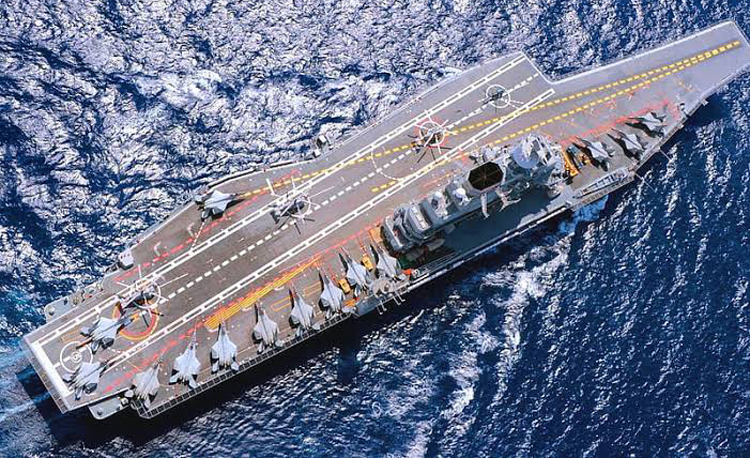
On the sidelines of Aero India 2023, Chief of Naval Staff Admiral R. Hari Kumar said, "Initially we will go for the repeat order with improved capabilities. And in the meantime, we will go for a study of larger carriers. By the time a third aircraft is commissioned, the life-span of INS Vikramaditya may end." Some changes were made to the initial plans of IAC-2 which was supposed to be bigger than IAC-1 in size. "The size of INS Vikrant is 44,000 tonne and we wanted the IAC-2 to be around 65,000 tonnes." IAC-2 is also expected to be of 45,000 tonne displacement with short take-off but arrested (STOBAR) recovery or short take-off, barrier-arrested recovery) technology.
Indian Navy emphasises the importance of having three aircraft carriers, allowing operational flexibility, as one can undergo maintenance while the other two remain active, enabling the Navy to be active in multiple areas simultaneously
It is not just long maintenance schedules why India needs three aircraft carriers, but also because by the time the third aircraft carrier is commissioned, the life-span of INS 'Vikramaditya' may end, leaving the Navy again with just two aircraft carriers. In addition, there could be unforeseen circumstances like an accident or enemy action (covert or overt) that can damage an aircraft carrier, requiring major repair and leaving one flank of India without aircraft carrier cover.
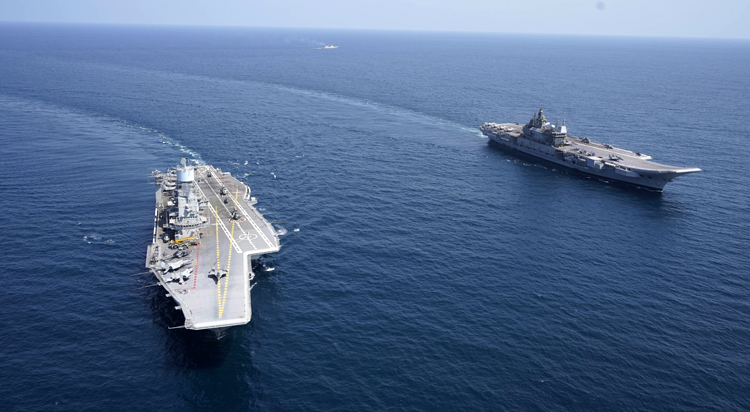
It has already been reported in these columns earlier that INS 'Vikrant' achieved full operational status on November 16, 2023. Delivered to the Indian Navy on July 28, 2022, Vikrant is the seventh largest aircraft carrier in the world with a range of about 15,000 km and a maximum speed of 52 km. The air wing of INS 'Vikrant' comprises off 30 aircraft, including MiG-29K fighter jets (to be replaced with the French Rafale (Marine) fighter jets; Kamov-31A anti-submarine helicopters; MH-60R multi-role helicopters, and; DHRUV Advanced Light Helicopters (ALH). In June 2023, the Navy showcased multi-carrier operations by seamlessly deploying two Carrier Battle Groups (CBGs) centered on INS 'Vikramaditya' and INS 'Vikrant' in the Arabian Sea and the coordinated deployment of more than 35 aircraft.
Cochin Shipyard Limited (CSL) is getting ready to complete its massive dry dock facility at its Ravipuram Shipyard in Kochi, with a capacity to accommodate vessels of up to 70,000 tonne docking displacement. The dry dock to be operational by June 2024 would play a pivotal role in construction of the third indigenous aircraft carrier – IAC-III.

China has been engaged in port development in Myanmar, Bangladesh, Pakistan and Sri Lanka. Entire Pakistani coast and Gwadar Port is available to the Peoples' Liberation Army (PLA) Navy. Through its debt-trap policy, China has secured a 99-year lease of the Hambantota Port in Sri Lanka. In addition, the Colombo South Container Terminal (CSCT) is a deep-water facility built, controlled and run by China through an aid project; CSCT is a 'Chinese enclave' within a Sri Lankan administered harbour.
The decision for IAC-2 is based on factors such as construction time, cost, and the trajectory of indigenisation of aviation assets. Plans for a third indigenous aircraft carrier (IAC-III) are already in motion, with plans for it to be larger than IAC-2.
China's State-run China Merchants Port Holdings Company Ltd has an 85 per cent stake in the $3 million TEUs-capacity Colombo International Container Terminals Ltd (CICT), a joint venture terminal it runs with Sri Lanka Ports Authority (SLPA). China is building a deep-water facility at Kyaukpyu Port of Myanmar as part of the Special Economic Zone (SEZ). China has also debt-trapped Maldives with its Integrated Development Project riding on huge concessional loans and aid financingon high rate of interest.
In 2002, the Navies of India and Indonesia signed the 'India-Indonesia Coordinated Patrol' agreement under which India is building a deep-sea facility in Indonesia's Sabang Port. Sabang is strategically important because of its access to the Straits of Malacca. Being built by Adani Ports (APSEZ), the initial estimated cost for the deepwater facility at Sabang is estimated at $1 billion.
In another significant development, the US International Development Finance Corporation has recently invested $553 million (4,600 crore) in a joint venture of the Adani Ports and a Sri Lanka company (SE) as the West Container Terminal (WCT) in Colombo Port. Adani Ports has 51 per cent stake in the venture. In Israel, Adani Ports now operates the Haifa Port along with a local company after purchasing it for $1.03 billion in January 2023.





